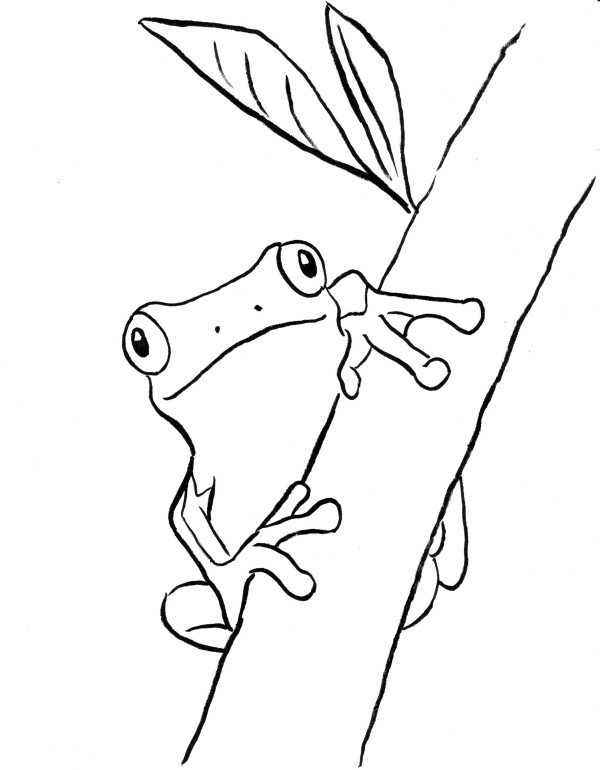

They survive mainly on insects, but have been known to consume toads and small birds. They also have oversized toe pads to help them land softly and stick to tree trunks.
TREE FROG SKETCH SKIN
The membranes between their toes and loose skin flaps on their sides catch the air as they fall, helping them to glide, sometimes 50 feet (15 meters) or more, to a neighboring tree branch or even all the way to the ground. When threatened or in search of prey, they will leap from a branch and splay their four webbed feet. They live almost exclusively in the trees, and leaps and "flies" from tree to tree or to bushes.
TREE FROG SKETCH FULL
kio, which even if full grown do not reach the size of Wallace's flying frog, though, and have more orange web fringes. Overall, this frog looks much like the green flying frog ( R. The base of the webs and one flank spot per side are jet black. The upper sides of the inside toes, as well as the outer parts of the toe and finger webbing, are brilliant yellow. Its back is bright shiny green and the underside is white to pale yellow. Together with a fringe of skin stretching between the limbs, this flying frog can parachute to the forest floor from high in the trees where it is normally found. Its limbs are very long, and its fingers and toes are webbed right to the tips.

Its eardrums are large, as well as its eyes, which feature horizontal pupils.

With a body length of about 80–100 mm (males are smaller than females), it is one of the largest species of Rhacophorus. This frog is quite photogenic, due to its large size, brilliant colors, and interesting behavior. Keulemans A Wallace's flying frog in its natural habitat Description Illustration from Wallace's 1869 The Malay Archipelago by J. nigropalmatus or an undescribed, closely related species. Similar frogs also occur in Laos, Vietnam, Malaysia, Thailand and southern China these may be R. maximus and Polypedates feae were once contained within Wallace's flying frog as subspecies. Wallace, who collected the first known specimen. Male red-eyed tree frogs can grow up to two inches in length and females can grow up to three inches.Wallace's flying frog ( Rhacophorus nigropalmatus), also known as the gliding frog or the Abah River flying frog, is a moss frog found at least from the Malay Peninsula into western Indonesia, and is present in Borneo and Sumatra. Adept climbers, red-eyed tree frogs have cup-like footpads that enable them to spend their days clinging to leaves in the rainforest canopy, and their nights hunting for insects and smaller frogs. They have white bellies and throats but their sides are blue with white borders and vertical white bars. According to their mood, red-eyed tree frogs can even become a dark green or reddish-brown color. However, the frogs’ eyes are not their only fashion statement! To match the brilliance of their eyes, these frogs have bright lime green bodies that sometimes feature hints of yellow or blue. If the nocturnal frog is approached while asleep during the day, its suddenly open eyes will momentarily paralyze the predator, providing the frog with a few seconds to escape. This alien-like feature is a defense mechanism called “startle coloration.” When the frog closes its eyes, its green eyelids help it to blend in with the leafy environment. Thanks to their big bulging red eyes, it’s not hard to recognize red-eyed tree frogs.


 0 kommentar(er)
0 kommentar(er)
